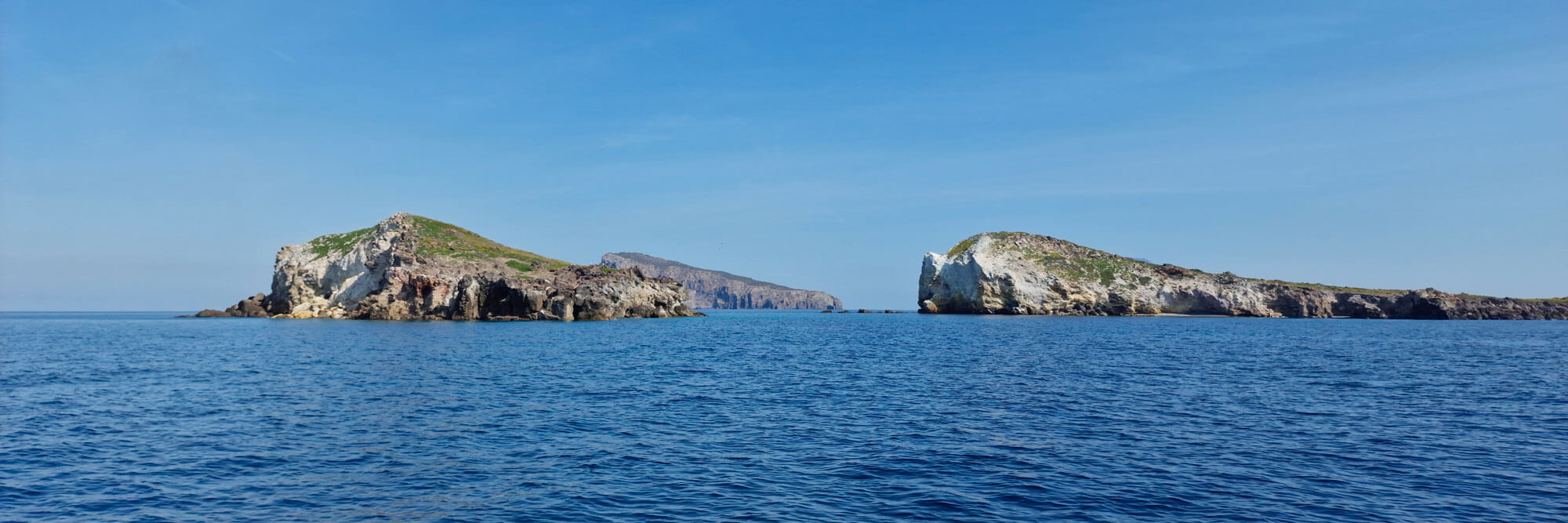
SiMaSeed PLUS contributes to the conservation, in their natural environment, of two threatened species of the flora of Malta and Sicily: the Maltese helichrysum (Helichrysum melitense) and the Aeolian chamomile (Anthemis aeolica).
Anthemis aeolica is an endemic species of the Aeolian archipelago, whose only population is found on the islet of Lisca Bianca, included in the Natura 2000 site ITA030025 «Island of Panarea and Scogli Viciniori». It is a plant of great biogeographical interest, assessed as being in critical danger of extinction (IUCN, 2012).
Anthemis aeolica was described by Lojacono Pojero (1903) for the islets of Bottaro, Basiluzzo and Dattilo, from which it is currently extinct. Despite their small size, these islets have been used as seasonal pastures. This, together with the increase in the number of nesting gulls, may have led to the disappearance of Anthemis aeolica both due to the browsing of grazing animals and the eutrophication of the soil which favoured the emergence of more competitive halo-nitrophilous species.
One objective of the SiMaSeed PLUS project is to improve the conservation status of Anthemis aeolica, and this is being achieved through the reinforcement of the Lisca Bianca population and the reintroduction of the species to the islets of Bottaro and Basiluzzo. The sites suitable for reintroduction were identified through the analysis of aerial photos and confirmed through field inspections.
The seeds of Anthemis aeolica were collected, cleaned and stored at the Germplasm Bank of the University of Catania. The germination and propagation protocol, which had been defined with the SiMaSeed project, was adopted for the production of the plants to be translocated. The seeds were sown in alveolated containers and incubated in a growth chamber at a temperature of 20/10°C and alternating light (to simulate night and day succession). After two months, the plants produced were taken outside for acclimatization, awaiting transfer to the intervention sites. The 300 plants thus produced were moved to Lisca Bianca, in the areas freed from invasive alien species. They are constantly monitored to evaluate their survival and growth. Direct sowing was carried out on Bottaro and Lisca Bianca. The seeds were placed inside small plots, in order to monitor their germination and ability to produce viable seedlings.
A similar process of site rehabilitation has been planned for the Wied Babu Natura 2000 site that has been liberated from the invasive Agave species. From historical records, this Wied Babu site used to host the only known population in Malta of the endemic Maltese Helichrysum or Maltese Everlasting Helichrysum melitense [Helichrysum panormitanum subsp. melitense (Pignatti) Iamonico & Pignatti.
Since this species currently grows only in Gozo, permission was applied for and granted by Environment and Resources Authority (ERA) to reintroduce the species in Malta using Gozo stock. Seeds collected in the late spring of 2022 were used to produce more than 1000 plants at the Dawwara nursery in Gozo. Of these, about 200 await transport to Malta and eventual transplantation at the Wied Babu site.